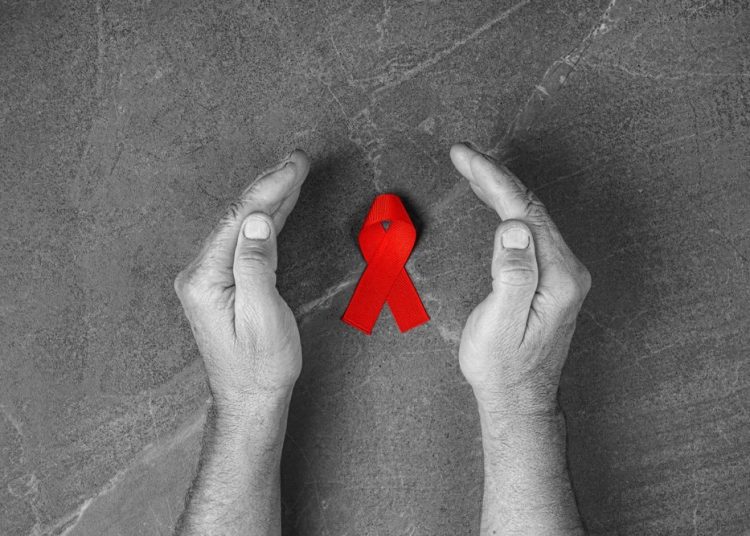A report published on July 13 by UNAIDS gives an update on the global situation of the HIV/AIDS pandemic in 2023. In the presentation of The Path that Ends AIDS, the executive director of the Joint United Nations Program on HIV/AIDS, Winnie Byanyima, highlighted that “there is a path” which will also help “ensure preparedness to address other pandemic challenges, and advance progress across the Sustainable Development Goals.”
“HIV responses,” the official continued, “succeed when they are anchored in strong political leadership to follow the evidence; to tackle the inequalities holding back progress; to enable communities and civil society organizations in their vital roles in the response; and to ensure sufficient and sustainable funding.”
Undeniable breakthroughs
When analyzing the world situation two decades ago, it is evident that the balance of the campaigns against the disease has been positive. At the beginning of the century, 2.5 million people were HIV carriers and deaths from the virus were estimated at 2 million per year. In parts of southern Africa, AIDS was reversing decades of increased life expectancy, and the drugs that had been developed to combat the disease were only available at very high prices, limiting their use.
UNAIDS data shows that today the number of people receiving antiretroviral treatment has quadrupled: from 7.7 million in 2010 to 29.8 of the 39 million people living with HIV in the world. Access to these drugs grew by 1.6 million people each year from 2020 to 2022. If this rate of growth continues, by 2025 35 million people would have access to antiretroviral therapy, which has expanded massively in sub-Saharan Africa, Asia and the Pacific, where about 82% of all people living with HIV in the world live.
The latter is essential: free access to HIV treatment has prevented almost 20.8 million AIDS-related deaths in the last three decades. In fact, the number of syndrome-related deaths has fallen by 69% since 2004 and countries such as Botswana, Eswatini, Rwanda, the United Republic of Tanzania and Zimbabwe, all in sub-Saharan Africa, have achieved the 95-95-95 targets.
This means that in these nations 95% of people living with HIV know they are HIV positive; 95% of HIV-positive people have access to antiretroviral therapy; and 95% of those under treatment have suppressed the viral load, which means they have every chance of living a long and healthy life, with minimal risk of transmitting the disease.
Marked decline in the number of new cases
Another encouraging piece of data is that the number of new infections fell in 2022 to 1.3 million, the lowest in decades. When this phenomenon is analyzed among the different age groups, it is observed that the most pronounced decreases occurred among girls and boys (0 to 14 years old) and young people (15 to 24 years old).
Regarding the distribution by sex during 2022, approximately 210,000 girls and young women between the ages of 15 and 24 were infected with HIV, which represents half of the new infections in 2010. Meanwhile, 140,000 males from 15 to 24 years old were infected in the last twelve months, representing a 44% reduction since 2010.
Fewer new infections in women and increased treatment coverage among people living with HIV have led to a 58% decline in the annual number of new infections in children globally between 2010 and 2022. It is estimated that 130,000 were infected the previous year and, although the number may seem high, it is the lowest since the 1980s.
Girls, women and key population groups at risk
According to the UNAIDS report, teenage girls and young women continue to face extraordinarily high risks of infection in many parts of sub-Saharan Africa, as do people of “key population groups” everywhere (men who have sex with men, people who practice transactional sex, people consume injectable drugs, trans people, etc.).
Every week, 4,000 teenage girls and young women contract HIV. In sub-Saharan Africa, women and girls account for 63% of all new HIV infections. Only about 42% of districts with very high HIV incidence in sub-Saharan Africa have specific prevention programs for teenagers and young women.
Regional inequalities
On the other hand, almost a quarter of new HIV infections (23%) occurred in Asia and the Pacific, where their numbers are increasing alarmingly in some countries. Steep increases in the number of new HIV infections have continued to be recorded in Eastern Europe and Central Asia since 2010 (49% increase) and in the Middle East and North Africa (61% increase). These trends are primarily due to the lack of prevention services for people from marginalized and key population groups and the barriers imposed by punitive laws, violence, social stigma and discrimination.
In many countries, HIV and other health services for people from key population groups are scarce, inaccessible or non-existent. As a result, the HIV pandemic continues to hit these communities hardest. In 2022, HIV prevalence was 11 times higher among men who have sex with men, 4 times higher among sex workers, 7 times higher among people who inject drugs, and 14 times higher among transgender people.
Mortality, treatment coverage and “the money route”
Despite the progress made, AIDS did away with one life every minute in 2022. A decisive role in this is that approximately 9.2 million people living with HIV are not receiving treatment for the infection and 2.1 million are receiving treatment, but did not have viral suppression.
Treatment coverage is delayed in the case of girls and boys from 0 to 14 years of age. Approximately 660,000 girls and boys living with HIV, representing about 43% of the 1.5 million carriers, were not receiving treatment in 2022. It is true that the number of deaths related to the disease in childhood fell by 64% between 2010 and 2022, but the HIV pandemic ended the lives of approximately 84,000 girls and boys in 2022. A frightening figure!
Many of the remaining challenges in the fight against the deadly virus stem from the growing funding gap. A total of US$20.8 billion was available for HIV programs in low- and middle-income countries in 2022, 2.6% less than in 2021 and well below US$29.3 billion dollars needed for 2025.
After rising substantially in the early 2010s, HIV funding has fallen back to the same level as in 2013. According to the UNAIDS Program analyses, where funding has increased, the incidence of the virus has decreased.
Today the regions with the greatest deficits are those making the least progress in the fight against their HIV epidemics.
Inequality: the biggest obstacle to progress in the fight against AIDS
In a publication from December 2022, Winnie Byanyima herself, UN executive director, stated that the coinciding crises of the COVID-19 pandemic, the war in Ukraine and the economic repercussions of both have affected services and increased the risks. However, she added, the more serious problem is that the world has not adequately addressed the inequalities that drive the AIDS pandemic. And she raised five inequalities:
- Unequal access to treatment for children and adults. Only 52% of children living with HIV are on treatment, a much lower percentage than adults receiving antiretroviral drugs (76%). Hence children, representing only 4% of the entire population living with HIV, accounted for 15% of all AIDS-related deaths.
- Unequal access to education. Globally, a teenage girl or young woman now contracts HIV every two minutes. By allowing girls to complete secondary education, better results are achieved in reducing new HIV infections among teenagers and young women. The risk is further reduced when accompanied by an empowerment support package.
- Unequal compliance with human rights. In many countries, sexual relations between people of the same sex continue to be criminalized, which causes these people to be afraid to go to centers where they can receive prevention, testing and treatment services that could save their life and break the cycle of infection. Punitive and discriminatory laws hamper the medical response to AIDS.
- Unequal access to medicines. High costs impede access to new long-acting antiretroviral drugs, which make HIV treatment and prevention easier for people living in low- and middle-income countries
- Unequal access to resources. Solidarity has stalled just when international support has been most needed. International development aid for HIV from bilateral donors other than the United States has plummeted 57% in the last ten years.
The fight against HIV/AIDS today
As can be seen, the fight against HIV/AIDS, although it has reaped important victories, also has enormous challenges to face. The idea of a world without AIDS, that is, where the millions of people who carry the virus do not develop acquired immunodeficiency syndrome (AIDS), would be a colossal achievement for global public health and humanity in general.
However, it seems unlikely that this will be achieved in as short a time frame as seven years. The lack of financing, its unequal distribution among different population groups and geographical areas, discrimination based on gender or sexual preferences, as well as the criminalization of risk groups will play a determining role.
The world needs to change a lot. In a scenario where one in four people living with HIV are still not receiving treatment, reaching the 95-95-95 targets is very difficult.










